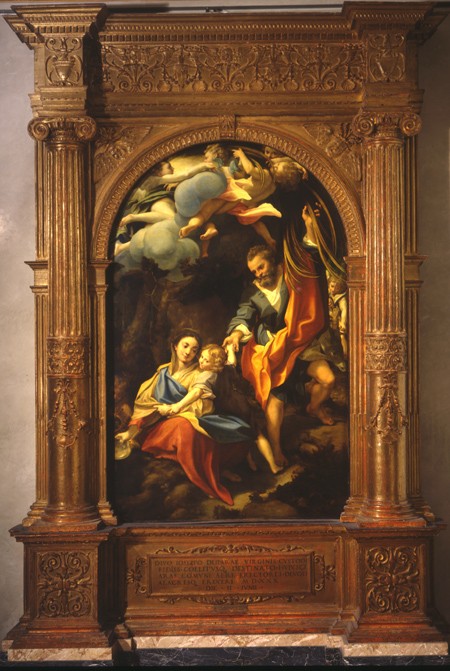The painter Antonio Allegri, called Correggio (1489/1494–1534), active in the northern Italian region of Emilia, was a major representative of his epoch. Monographs, exhibitions, and symposia have clarified the intellectual, devotional, and social contexts in which Correggio’s art flourished, as well as his local network of patrons and the ideas governing their commissions. It has also been demonstrated that Correggio was interested in the language of architecture and its orders. My book reconsiders Correggio’s artistic practice to suggest that, despite its unfolding on the periphery of the Italian art world, his aesthetics resulted from a sophisticated approach to the image and its framing. Specifically, my study focuses on a wide range of Correggio’s sacred and profane images characterized by tender forms, dynamic illusionism, and figures artfully cut at the borders, features that exercise a certain power over the viewer’s senses of sight and touch. Correggio’s production is distinguished by its exploration of the nature of painting as a fluid substance of effects and affects conceived through the imitation of soft matter and unmediated emotions, and the renewed relevance given to framing devices.
Correggio was not the only master of the Renaissance to reflect on
the possibilities of the borders and frames of his works. Yet he intervened in a distinctive way in a long tradition of collaboration between painters and
My research further takes on Correggio’s stunning episode of textural illusionism in the dome of Parma’s Benedictine Cassinese church of San Giovanni Evangelista representing Saint John’s vision of the Second Coming of Christ. New evidence confirms that this subject germinated from the artist’s concerted reflection on passages from the Book of Revelation, to which he was likely exposed while living in the Cassinese monastery at the time he was working on this commission (1520–1523). It has long been recognized that viewers in the church nave and the monks in the choir had different views of and took different messages from the painted apparition of Christ overhead. My investigation of the Cassinese network of arts suggests that Correggio’s striking creation of Renaissance illusionism amalgamates a Byzantine tradition of imagery in which late antique regional remnants from Ravenna played a key role.
As a
